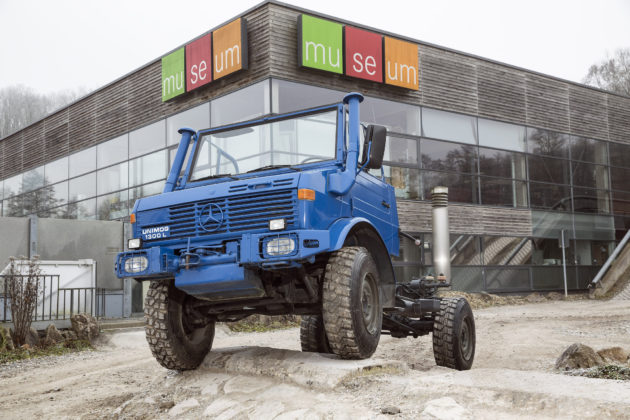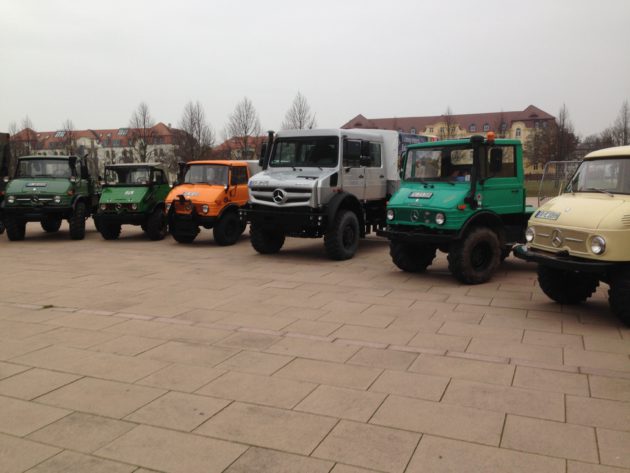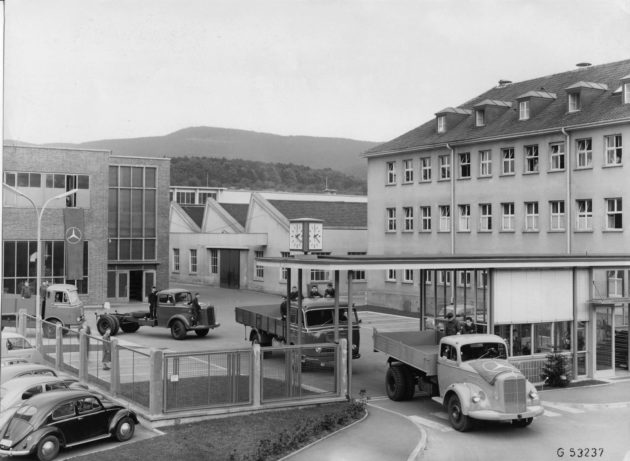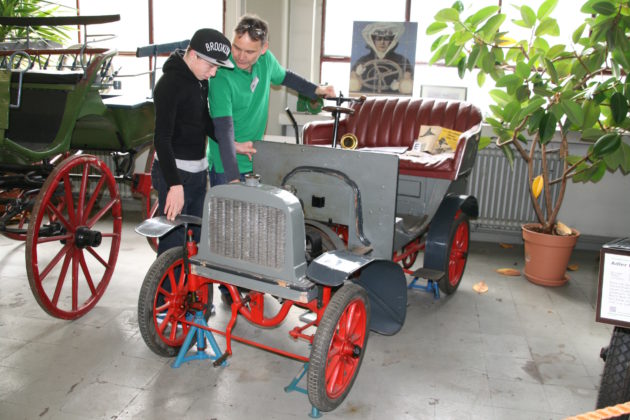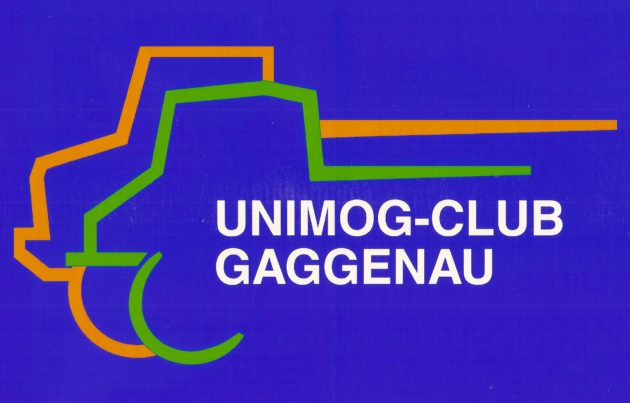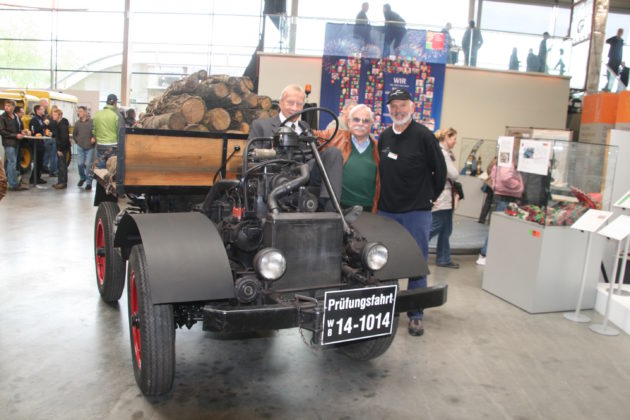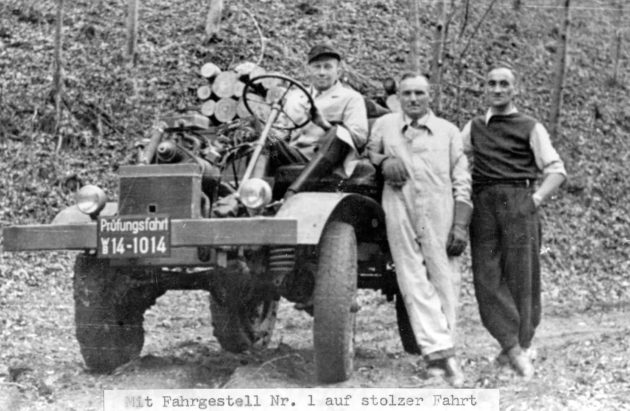Hochgeländegängiger Unimog für die Bergwacht Schwarzwald

v.l.n.r.: Karsten Fuchs, Mercedes-Benz Unimog Marketing, Lutz Scherer, Geschäftsführer der Bergwacht Baden-Württemberg, David Hierholzer, Bergwacht Schwarzwald. // from left to right: Karsten Fuchs, Mercedes-Benz Unimog Marketing, Lutz Scherer, Managing Director of the Baden-Württemberg mountain rescue service, David Hierholzer, mountain rescue service Black Forest.
- Bergwacht erprobt mit neuem Fahrzeug modulares Beladungskonzept
- Mit dem Allrad-Lkw für alle Notfälle gewappnet – von Bergrettung bis zum Hochwasser
Stuttgart / Feldberg. Zum Start der Wintersportsaison übergab der Bereich Special Trucks von Mercedes-Benz an die Bergwacht Baden-Württemberg einen Unimog U 4000 mit siebensitziger Doppelkabine als langfristige Leihgabe. Damit hat die Bergwacht die Gelegenheit, das hochgeländegängige Unimog-Konzept auf dem Feldberg im Hochschwarzwald für ihre Belange auf Herz und Nieren zu testen.
Karsten Fuchs, Leiter Vertrieb Deutschland bei Mercedes-Benz Special Trucks, sagte bei der symbolischen Überreichung der Fahrzeugschlüssel: „Der Unimog war die ersten 50 Jahre seines Lebens ein Gaggenauer und somit nicht nur „qua Geburt“, sondern dann auch im täglichen harten Landwirtschafts- und Forsteinsatz ein Kind des Schwarzwaldes. Insofern freuen wir von Mercedes-Benz Special Trucks uns ganz besonders, die Bergwacht Schwarzwald bei ihrem ehrenamtlichen Einsatz mit diesem im weltweiten, anspruchsvollen Geländeeinsatz bewährten Spezialfahrzeug unterstützen zu dürfen.“
Der Geschäftsführer der Bergwacht Baden-Württemberg, Lutz Scherer, bemerkte beim Empfang des Unimog U 4000: „Rettungseinsätze im unwegsamen Gelände sind immer eine besondere Herausforderung für Rettungskräfte und Material. Wir sind daher sehr dankbar, dass Mercedes-Benz Special Trucks uns diesen Unimog zur Verfügung stellt. Dieses Fahrzeug wird unseren besonderen Anforderungen absolut gerecht, und wir können damit Verletzten noch besser helfen.“
Der Unimog bei der Bergwacht Hochschwarzwald
Das Feldberg-Gebiet eignet sich durch seine Höhenlage von 1493 m, anspruchsvollen Klimaregionen mit Sturm und Schneefall sowie steiler und felsiger Topografie bestens, um die Einsatzmöglichkeiten des Unimog für Einsätze in der Bergrettung auszuloten. Durch den Unimog wird die Geländekompetenz der Bergwacht auch gegenüber anderen Organisationen gestärkt. Außerdem steigert der Unimog die Fähigkeiten der Bergwacht im Bereich Bevölkerungsschutz, beispielsweise bei Hochwasserkatastrophen, und schafft im Falle eines großen Bergrettungseinsatzes auch zusätzliche Transportkapazität durch seine Mannschaftskabine. Mit einem geländetauglichen Anhänger können zusätzlich Boote, Generatoren, Schneemobile und anderes schweres Gerät an unwegsame Einsatzstellen gebracht werden.

Mercedes-Benz Special Trucks übergibt einen Unimog U 4000 Doppelkabine an die Bergwacht Schwarzwald. // Mercedes-Benz Special Trucks hands over a Unimog U 4000 with double cab to the Black Forest mountain rescue service.
Der an die Bergwacht übergebene Unimog U 4000 verfügt über eine Mannschaftskabine mit insgesamt sieben Sitzplätzen. Auf dem Radstand von 3850 mm baut eine Stahlpritsche mit Plane, auf denen die Bergwacht ihr benötigtes Rettungsmaterial in Modulen transportiert. Der Vier-Zylinder-Dieselmotor OM 924 LA Euro V bietet eine Leistung von 160 kW/218 PS,
die über den Allradantrieb an alle Räder verteilt werden. Das große Plus des hochgeländegängigen Unimog sind seine optimalen Fahreigenschaften in schwerem Gelände und die extrem gute Robustheit und Verwindung des Rahmens von bis zu 600 mm bei der Fahrt im Gelände. Portalachsen, der niedrige Fahrzeugschwerpunkt und extrem günstige Werte bei Böschungswinkel (vorn 44 Grad, hinten 51 Grad), Rampenwinkel (34 Grad) und der Steigfähigkeit (45 Grad) – das alles macht den hochgeländegängigen Unimog einmalig. Dazu kommen die Watfähigkeit von maximal 1,20 m und ein seitlicher Neigungswinkel von 38 Grad.
Das modulare Beladungskonzept des Unimog für den Bergwachteinsatz
Sogenannte Rettungsmodule werden auf Rollwagen verladen, um den Unimog bei Einsätzen schnellstmöglich für zusätzliche logistische Leistungen umzurüsten. Als Gerätschaften für die Nothilfe gibt es das Modul Seilbahn und das Modul Beleuchtung mit Notstromerzeugern und Flutlichtstrahlern. Das Modul Betreuung umfasst Zelte mit Einrichtung für die Erstversorgung von Verletzten. Das Modul Lawine umfasst Material zur organisierten Sondierung und Rettung von Patienten in Lawinen. Durch die Verlastung des Moduls Lawine erspart sich die Bergwacht Schwarzwald zusätzliches Material für die verschiedenen Bergwachtstationen am Belchen, Feldberg und Schauinsland.

Rettung im unwegsamen Gelände
Im Auftrag des Landes Baden-Württemberg übernimmt die Bergwacht Schwarzwald e.V. den Rettungsdienst abseits der Straßen und Siedlungen im unwegsamen Gelände des Schwarzwaldes und betreut zahlreiche Skipisten, Loipen, Sessel- und Seilbahnen in der Region. Zudem ist die Feldberg-Region ein überragender Touristenmagnet mit jährlich über neun Millionen Gästen, aber als Schattenseite auch bis zu 600 Not- und Rettungsfällen, bei der die Bergwacht eingreifen muss.
Das Verantwortungsgebiet der Bergwacht Hochschwarzwald gliedert sich in drei kreisförmige Einsatzregionen um den Feldberg. Dadurch werden sie auch zu Großlagen herangezogen, die bis an die Schweizer oder französische Grenze reichen. Die Fähigkeiten müssen vom Hochwassereinsatz bis zu Rettungsfahrten im alpinen Gebirge genügen. So rettet die Bergwacht in den Frühjahrs- und Sommermonaten überwiegend Wanderer, Bergsteiger und Gleitschirmflieger; es gibt aber auch Höhlenrettungen. In den Wintermonaten konzentrieren sich die Einsätze stark auf Wintersportler und die Lawinenrettung. Ganzjährig führt die Bergwacht Luftrettung und Seilbahn-Evakuierung durch.
The Unimog with the Upper Black Forest mountain rescue service
Stuttgart / Feldberg. In readiness for the start of the winter sport season, the Special Trucks division at Mercedes-Benz has loaned the mountain rescue services in Baden-Württemberg a Unimog U 4000 with a seven-seater double cab. With it, the mountain rescue crews have the possibility to put the Unimog extreme off-roader concept to the test on the Feldberg mountain in the Upper Black Forest region.
Karsten Fuchs, Head of Sales in Germany for Mercedes-Benz Special Trucks, handed over the key ceremonially with these words: “The first 50 years of the Unimog history were linked with the town of Gaggenau and thus the vehicle wasn’t just born in the Black Forest, but it was also put through its paces on a daily basis in the harsh agricultural and forestry tasks of the area. In this respect, we at Mercedes-Benz Special Trucks are particularly pleased to be able to lend a helping hand to the volunteers of the Black Forest mountain rescue service in the form of this world-renowned vehicle, which have proved itself in the toughest of off-road terrain.”
Upon receiving the Unimog U 4000, the Managing Director of the Baden-Württemberg mountain rescue service, Lutz Scherer, noted: “Emergency operations in difficult terrain are always particularly challenging for the rescue services and their materials. We are therefore very grateful that Mercedes-Benz Special Trucks is providing us with this Unimog. The vehicle is absolutely perfect for our specific requirements and it will help us to help victims in a much more appropriate way.”
The Unimog with the Upper Black Forest mountain rescue service
The Feldberg area is a great place to try out the Unimog for mountain rescue operations. At altitudes of 1493 m, there reigns a harsh climate with storms and snow, as well as a steep, craggy topography. The Unimog and its off-road competence will also help the mountain rescuers to work better with other organisations. What is more, the Unimog will improve the level of protection which the mountain rescue service can offer to people, for example after floods, and if the worst happens, the team transport cab also gives them a greater transport capacity in the event of a major mountain rescue operation. With a trailer suitable for off-road use, boats, generators, snowmobiles and other heavy devices can also be taken along to difficult-to-reach places as required.
The Unimog U 4000 on-loan to the mountain rescue service features a cab for transporting an entire team, with a total of seven seats. With a wheelbase of 3850 mm and a steel drop-side body with tarpaulin, the mountain rescuers store all of the necessary rescue materials in modules. The four-cylinder OM 924 LA Euro V diesel engine offers performance of 160 kW/218 hp, which is transmitted to the wheels by an all-wheel drive system. A great advantage of the Unimog extreme off-roader are its optimal driving characteristics in tough off-road terrain and the extremely impressive robustness and frame torsion of up to 600 mm when driving off-road. Among the vehicle’s characteristics are portal axles and a low centre of gravity as well extremely favourable values for the approach and departure angles (44 degrees at the front, 51 degrees at the rear), the ramp angle (34 degrees) and the climbing ability (45 degrees) – all of which make the Unimog extreme off-roader unique. In addition to this there is the maximum fording depth of 1.20 m and a lateral inclination angle of up to 38 degrees.
The modular loading concept of the Unimog for mountain rescue operations
So-called rescue modules are loaded in trolleys in order to equip the Unimog as quickly as possible with additionally required materials for the various types of operation. On-board for emergency situations are, among other things, the cablecar module and the illumination module with emergency power generator and floodlights. The care module includes tents equipped for providing first-aid to victims. The avalanche module comprises material for organised probing for and rescue of avalanche victims. By loading the avalanche module on the vehicle, the Black Forest mountain rescuers can save on the procurement of additional materials for each of the mountain rescue stations at Belchen, Feldberg and Schauinsland.
Rescue in difficult terrain
On behalf of the state of Baden-Württemberg, the Black Forest mountain rescue service (Bergwacht Schwarzwald e.V.) manages mountain rescue operations off the beaten track and away from civilisation in the difficult terrain of the Black Forest whilst also looking after numerous ski pistes, cross-country skiing trails, lifts and cablecars in the region. Furthermore, the Feldberg region is an incredible tourist magnet with more than nine million visitors per year, but unfortunately there are also up to 600 emergency rescue operations in which the mountain rescuers were called out.
The area which the Upper Black Forest mountain rescue service covers is split into three circular operational zones around the Feldberg mountain. They are also called out to bigger emergencies which can be as far away as the Swiss or French border. The tasks range from floods to rescue journeys in the Alps. In the spring and summer months, the mountain rescue teams predominantly rescue walkers, rock climbers and paragliders. They even carry out rescues in caves. In the winter months, the vast majority of their operations concern winter sports and avalanche rescues. All year round, the mountain rescue service carries out rescue operations by air as well as cablecar evacuations.
Text und Fotos: Daimler AG





